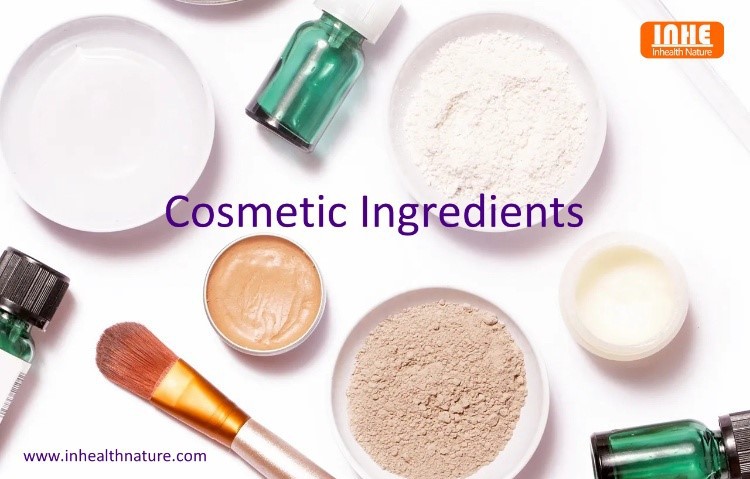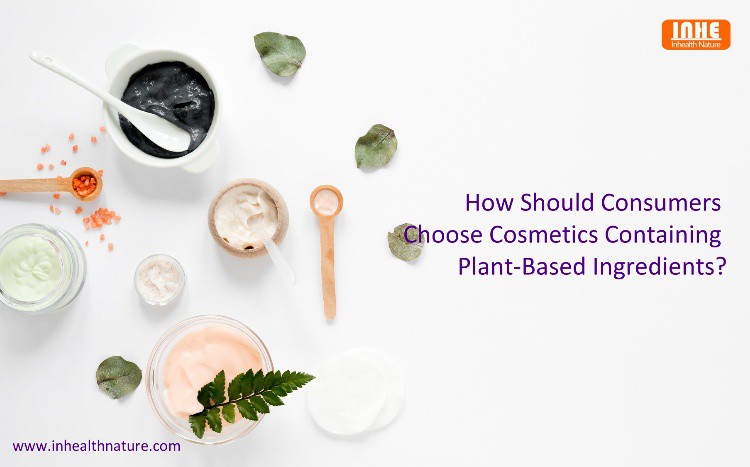Top 10 Cosmetic Ingredients For 2025
Aug 26, 2025
The most potent new ingredients in beauty aren't found in labs but in leaves, roots, and blossoms. Explore the reasons behind this shift in the article below.
Why are plant-based ingredients increasingly popular in cosmetics?
Market Growth and Consumer Preferences
The vegan cosmetics market is projected to reach $19.5 billion in 2025, with a CAGR of 6.8%, reflecting robust demand. This growth is fueled by millennials and Gen Z, who prioritize brands that align with their values of sustainability and transparency. Trends like "skinimalism" (simplified routines with multi-functional products) and "clean beauty" emphasize plant-based ingredients for their efficacy and minimal environmental impact. Social media and influencer marketing further accelerate this shift, with platforms like TikTok highlighting trends such as microbiome-friendly skincare and gourmand scents (e.g., vanilla, watermelon) derived from natural sources.
Health and Safety Benefits
Consumers are increasingly wary of synthetic chemicals (e.g., parabens, sulfates) and seek safer, non-toxic alternatives. Plant-based ingredients, rich in antioxidants, vitamins, and natural emollients (e.g., hyaluronic acid from fermentation, jojoba oil), provide effective skincare benefits without irritation. For example, green tea extract offers anti-inflammatory properties, while coconut oil delivers hydration without clogging pores. This trend is particularly strong among users with sensitive skin or conditions like eczema, who prioritize "clean beauty" formulations.
Innovation and Performance Efficacy
Advances in biotechnology have enhanced the performance and versatility of plant-based ingredients. Brands now use fermentation processes to create vegan alternatives to collagen and squalene, while AI-driven formulation tools optimize ingredient blends for maximum efficacy. For example, 100% PURE combines vitamin C from fruits with hyaluronic acid for radiance-boosting serums, challenging the notion that natural products are less effective.
Sustainability and Environmental Concerns
The cosmetics industry is under pressure to reduce its environmental footprint, and plant-based ingredients offer a sustainable alternative to synthetic or animal-derived components. Plant-based sourcing often involves lower carbon emissions, reduced water usage, and biodegradable properties compared to conventional ingredients. For instance, brands like L'Oréal and Burt's Bees emphasize eco-friendly packaging and responsibly harvested botanicals (e.g., aloe vera, shea butter) to appeal to environmentally conscious consumers. The rise of "green chemistry" and innovations in biodegradable formulations further align plant-based cosmetics with circular economy goals.

What are the top 10 cosmetic ingredients for 2025?
|
No. |
Plant-Based Ingredient |
Active Ingredient |
Health Benefit |
Product Application |
Coomon Compounding Ingredient |
|
1 |
Ginseng Extract |
Ginsenosides, gintonin |
Enhances skin energy and elasticity by stimulating collagen production and hyaluronic acid release from fibroblasts. It also inhibits melanin production, aiding in brightening and anti-aging. |
Anti-aging serums, brightening creams, toners, and facial polishes. |
Hyaluronic acid, peptides, and vitamin C. |
|
2 |
Turmeric Extract |
Curcumin |
Offers anti-inflammatory and antioxidant properties, aiding wound healing, reducing hyperpigmentation, and soothing acne-prone skin. It mitigates oxidative stress and supports collagen synthesis. |
Facial masks, acne treatments, soothing creams, and anti-inflammatory serums. |
Neem, yogurt, honey, and aloe vera. |
|
3 |
Grape Seed Extract |
Polyphenols (catechins, gallic acid), proanthocyanidins |
Provides antioxidant protection, reduces wrinkle depth, improves skin hydration, and offers UV protection. Encapsulation in hyalurosomes enhances stability and efficacy. |
Anti-aging serums, moisturizers, and protective day creams. |
Hyaluronic acid, glutathione, and vitamin E. |
|
4 |
Ganoderma Lucidum (Reishi) Extract |
Triterpenoids, polysaccharides, phenolic compounds |
Exhibits anti-aging effects by neutralizing free radicals, inhibiting tyrosinase for brightening, and soothing inflammation via cytokine suppression. Supports collagen synthesis and wound healing. |
Luxury anti-aging creams, brightening serums, and products for sensitive or inflamed skin. |
Hyaluronic acid, niacinamide, and ceramides. |
|
5 |
Green Tea Extract |
Polyphenols (EGCG), catechins |
Offers antioxidant, anti-inflammatory, and anti-aging benefits. Fights oxidative stress, reduces acne, and provides detoxifying properties. Often used in nanoencapsulated forms for better stability. |
Cleansers, moisturizers, serums, masks, and sun care products. |
Hyaluronic acid, vitamin B3, and probiotics. |
|
6 |
Centella Asiatica Extract |
Asiaticoside, madecassoside |
Promotes skin rejuvenation, wound healing, and collagen synthesis. Soothes inflammation and strengthens the skin barrier, making it ideal for sensitive and acne-prone skin. |
Barrier repair creams, calming serums, and products for eczema and psoriasis. |
Hyaluronic acid and vitamin C. |
|
7 |
Monk Fruit Extract |
Mogrosides |
Offers antioxidant and anti-inflammatory benefits. Helps hydrate the skin and may support collagen production. Its natural sweetness makes it suitable for sensorial product enhancement. |
Hydrating serums, moisturizers, and products designed for sensitive skin. |
Hyaluronic acid, aloe vera, and chamomile. |
|
8 |
Purslane Extract |
Flavonoids, vitamins, and fatty acids |
Provides antioxidant protection, reduces inflammation, boosts hydration, and supports collagen production. Helps in skin repair and regeneration. |
Anti-aging creams, hydrating serums, and products for acne and rosacea. |
Hyaluronic acid, retinol, and peptides. |
|
9 |
Anthocyanins |
Flavonoid pigments (e.g., from berries) |
Neutralize free radicals, reduce collagen degradation, offer UV protection, and support skin barrier function. |
Antioxidant serums, day creams, SPF formulations, and barrier repair products. |
Vitamin C, hyaluronic acid, and ferulic acid. |
|
10 |
Resveratrol |
Trans-resveratrol and polyphenolic compounds |
Potent antioxidant that protects against UV-induced damage, reduces inflammation, and promotes collagen synthesis. |
Night creams, anti-aging serums, and brightening treatments. |
Vitamin E, hyaluronic acid, and niacinamide. |

How should consumers choose cosmetics containing plant-based ingredients?
Understand How the Ingredient is Delivered
The formulation of the product determines whether the active ingredient can penetrate the skin and remain stable.
a. Serums and Ampoules: These are typically the best choices for potent actives like Resveratrol, Grape Seed Extract, or Green Tea Extract. They are formulated with a higher concentration of active ingredients and fewer heavy occlusives, allowing for better penetration.
b. Creams and Moisturizers: Ideal for ingredients that support the skin barrier, such as Centella Asiatica or Purslane Extract. They create a protective seal, helping to lock in moisture and the benefits of the actives.
c. Face Oils: Excellent for oil-soluble antioxidants like Anthocyanins (if carried in an oil) and can help fortify the skin's lipid barrier.
d. Avoid Incompatible Packaging: Potent antioxidants like Resveratrol and Green Tea EGCG are notoriously unstable and degrade when exposed to light and air. Choose products in dark, opaque, or airless pump packaging to ensure they remain effective until the last use.
Match the Ingredient to Your Skin Concern
Not every powerful ingredient is right for every concern.
a. For Anti-Aging and Wrinkles: Prioritize products featuring Ginseng Extract, Resveratrol, Grape Seed Extract, and Ganoderma Lucidum Extract. These target collagen production and fight free radical damage.
b. For Soothing Redness and Sensitivity: Centella Asiatica Extract, Purslane Extract, and Turmeric Extract are exceptional choices for calming inflammation and strengthening the skin barrier.
c. For Brightening and Hyperpigmentation: Look for Ginseng Extract (inhibits melanin), Ganoderma Lucidum (tyrosinase inhibition), and Turmeric Extract.
d. For Acne-Prone Skin: Green Tea Extract (antibacterial and anti-inflammatory), Turmeric Extract, and Centella Asiatica (healing) are highly beneficial.
e. For Overall Antioxidant Protection: Anthocyanins, Resveratrol, Green Tea Extract, and Grape Seed Extract provide a broad shield against environmental aggressors.
Patch Test and Introduce Slowly
Even natural ingredients can cause reactions.
a. Always Patch Test: Before applying a new product all over your face, apply a small amount to a discreet area like the inner arm or behind the ear for several days to check for any redness, itching, or irritation. This is especially important with potent extracts like Turmeric, which can cause contact dermatitis in some individuals.
b. Introduce One Product at a Time: If you are trying multiple new products containing these botanicals, introduce them one at a time. This allows you to pinpoint the exact product if a reaction occurs and to see which ingredient is truly effective for your skin.
At Inhealth Nature, we specialize in transforming these cutting-edge plant-based developments into customized formulations that reflect your brand's vision and meet your customers' specific needs. From concept to finished product, our expertise ensures your offerings stand out in a competitive market while building long-term trust.
Ready to create something extraordinary? Reach out to us at Info@inhealthnature.com and let's craft the next iconic product together, because your brand deserves nothing less than nature's best, perfected.






